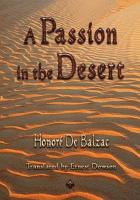A pair of black-and-white fantails, which we know better as wagtails, built their nest upon the branch of a willow-tree.
Most country boys and girls know the wagtail and its beautiful nest. It is a little black bird with a white breast and a tail that is never still for an instant. You see it sometimes on the backs of sheep and cattle, or playing round about them as they graze, and chattering all the time. Its nest is a perfect cup, made of twigs stuck together by cobweb, and warmly lined in the same way. They like to build their nests upon a bough over-hanging the water, and if you go near it they chatter more than ever.
These two wagtails built their nest upon the willow- tree, and very soon there were four eggs in the nest- cream-coloured eggs, with a grey rim around them. Three little ones were hatched, and the parents were very happy hunting about to get insects for them.
But one day, while the little wagtails were yet merebabies, half-covered with down, and snuggling up together in the nest to keep warm, it began to rain. The flood-waters came down, and the pool under the willow- tree rose higher until the water soaked through the bottom of the wagtails" nest, and the little ones, unused to that strange chill, crawled about the nest and clung to the sides of it; but the rain went on, and the water rose higher.
The poor little mother fluttered about her home that was so fast disappearing under the yellow waters. In despair she settled down upon it, and spread her wings above her brood; but of what use were those frail wings to stop the rising flood? Soon, only the mother"s head was left above the water; the wet wings fluttered, and tried to keep back the flood. Perhaps, close to her brave little heart, she could still feel the last struggles of her drowning babes! She could not save them, but she could die with them.
With the last sight of the green willows and the blue sky and all the things that birds love telling her to save herself and still be with them, she clutched the nest more firmly, put her wet breast down to her dead brood, and so died with them; and the last sign was a little pearly bubble of air that rose through the turbidwater-the passing spirit of a bird.
When the water went down, there were still the sodden nest, the drowned bird-mother, and her little ones. Their tiny heads were raised to her; the mother"s wings were still spread over them; her tiny claws, with a grip that the fear of death could not loosen, still clung to the side of the nest; but the sun that dried them could not warm them again to life.
There may be hundreds of such instances of a bird"s devotion that we never see or hear of, but if there were only this one, both you and I know well that the mother wagtail did not give her life in vain; for not a boy or girl who reads this story will ever again harm a wagtail or its nest. I am sure of that.
-Donald MaCdonald
About the Author.-Donald MaCdonald (1857-1932) was born in Fitzroy, Victoria, of Highland ancestry and was one of Australia"s best- known newspaper writers. For many years he was on the staff of The Argus, Melbourne. He wrote articles on all subjects, but in later years specialized in nature-study. Mr. Macdonald was a war correspondent at the time of the Boer War.
About the Story.-Tell what you have seen and noted of wagtails. What other examples of mother-love have you seen or have you heard of?















